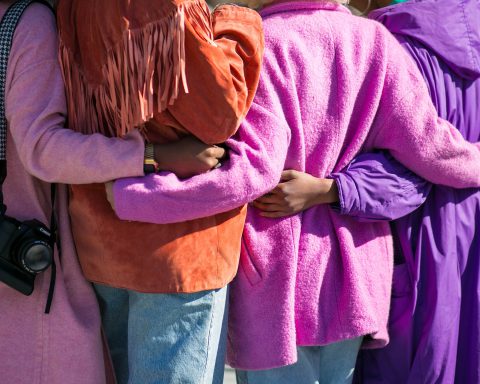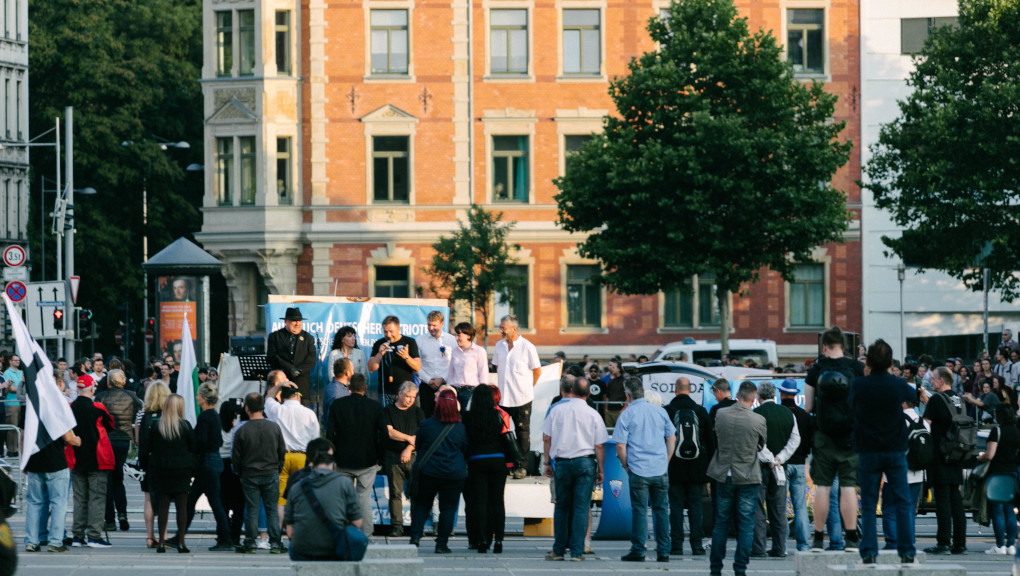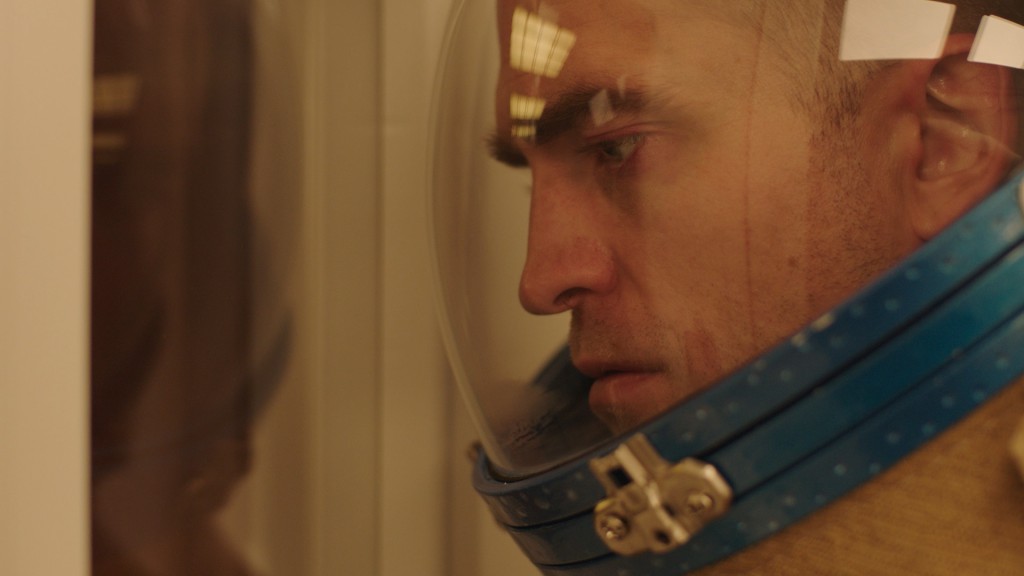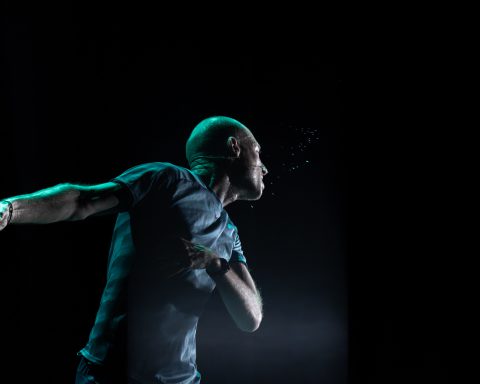The outcome of the recent elections in Saxony left some with a conflicting sense of fear and optimism. Fear for the rise of far-right sentiment, fear for friends from “elsewhere,” fear for the chronic anti-immigration rhetoric that the AfD are so set on shouting. Islam is singled out in the last few chapters of the far-right party’s manifesto. Yet, optimism is held in some of the statistics, in the power of the youth, and as Edward Said states,
The power of culture, over the culture of power.
At the centre of the Spinnerei complex lies Halle 14, a monument to non-profit, thought-provoking presentation. Their latest exhibition Forgotten Enlightenments, is the creation of a curatorial collaboration between Halle 14 director Michael Arzt and Elham Khattab, founder of Cairo-based organisation Out of the Circle.
The two met in Leipzig whilst Khattab was on a curatorial programme at GfZK in 2015. The exhibition has been a long thought-out process, culminating into the presentation of works by 16 artists in the vast industrial complex.
The exhibiting artists have current or past connections to Islamic culture.
It may be easy to assume these artists all come from the Middle East and North African countries. However, many were born or are now based in Europe, including a number born and raised in Saxony.
Khattab explained: “The exhibition seeks to highlight the influence of Islamic culture on contemporary art and dialogue, in the realm of spirituality, society, history, politics, and gender… therefore, it’s important to have artists from all over the globe, not just from where one assumes to be Islamic.”
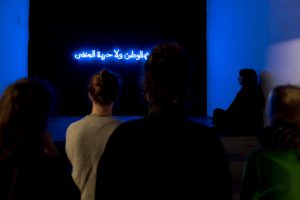
It is not only the pre-conceived assumptions of where the artists come from that the exhibition challenges. The notion of enlightenment holds high religious associations both in Eastern and Western cultures. Yet the curatorial text for the exhibition informs us of many philosophical, scientific and artistic influences the Islamic world has had on many other cultures.
The text states: “According to Muhammad Sameer Murtaza, the West owes Muslims not only the mediation of the ‘ancients,’ but also the experimental spirit that was foreign to the Greeks.” One example refers to Raphael’s fresco “The School of Athens” and its inclusion of Andalusian lawyer, physician, and influential Aristotle commentator Ibn Rushd. Such cultural specifics are rarely heard in the teachings of the work. But I wonder, were they truly forgotten or just left untold?
The topics tackled in the exhibited artworks are not destined for the same forgotten future.
Forgotten Enlightenments offers a platform for many often undiscussed or unknown insights on the influence of Islam in contemporary art. Some works offer an insight into a group’s personal experience: women, Sufis, those living in exile. Others reference the influence of historic components: architectural, musical or political.
The series “We, They, and I” by Feriel Bendjama gives direct insight into the experience of women who wear the Hijab and the stereotypical associations they may endure.
Each of the figures represented is adorned with different accessories; a gold medal, a cigarette hanging from the lips, a crown, a Qu’ran balanced on the head.
Just two sets of photographs out of the three-part series are presented in the exhibition. Arzt and Khattab tell of how the “We” and “I” series were selected, excluding the “They,” as the exhibition is about the voices of those with personal stories to tell, not the voices of those who may characterize.
Throughout the exhibition, further female voices are prominent.
Anahita Razmi has two video works in the show. One titled “AAAAAAAAAAAH” plays with the phoneme’s inclusion in both global pop songs and the Islamic call to prayer. Merging the audios together, a faceless figure wearing a black sequin dress dances to the new amalgamation. The simplicity of the sound, combined with the work’s alluring aesthetic, shows how a clear composition can present much more complex ideas.
Asked whether it was a deliberate decision to include so many female voices, Arzt answered: “As a male curator, it is my duty to check every artist list and ensure equal inclusion on all projects.” His words are refreshing and inspiring in a still male-dominated art world.
Some works in the exhibition reference true histories. Others re-imagine those that could have been.
Artist Manaf Halbouni presents his work “What If,” a mind game of an alternative world course. What if the industrial revolution in the 19th century had taken place in the Ottoman Empire and the Arab-influenced part of the world, not Western Europe? In the form of a video presenting the fabricated General Yusef Hadid and installation of supporting maps, Halbouni leads us to further question some nationalist superiorities that consume many contemporary conditions.
Whether true or imagined, the presentations in “Forgotten Enlightenments” raise questions and offer insights that reverberate far beyond the Spinnerei complex.
So often do these important reflections get trapped in the echo chamber of the art world. When posed with this point, both curators had, of course, already considered it. Khattoub told me how a number of additional programmes within the exhibition structure aim to expand exposure. They have tours in Arabic, German and English, as well as meetings organized with school and university groups from Leipzig.
Particularly in the context of the current political climate of Saxony, the exhibition stands as a statement to the power of inclusion, integration and culture. The exhibition is not one that will be forgotten anytime soon.
FORGOTTEN ENLIGHTENMENTS
Unknown stories about Islam in contemporary art
HALLE 14
Spinnerei, Spinnereistraße 7, 04179 Leipzig
Through 4 August 2019


![Wine & Paint event on 9 Nov. 2024 at Felix Restaurant, Leipzig. Photo: Florian Reime (@reime.visuals] / Wine & Paint Leipzig](https://leipglo.com/wp-content/uploads/2024/12/pixelcut-export-e1733056018933-480x384.jpeg)

